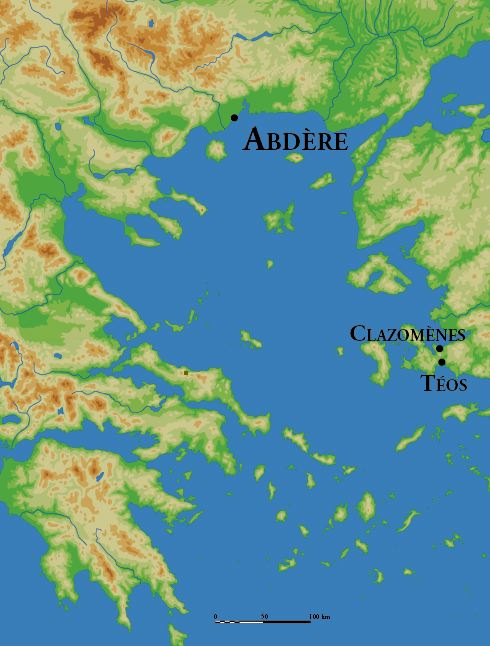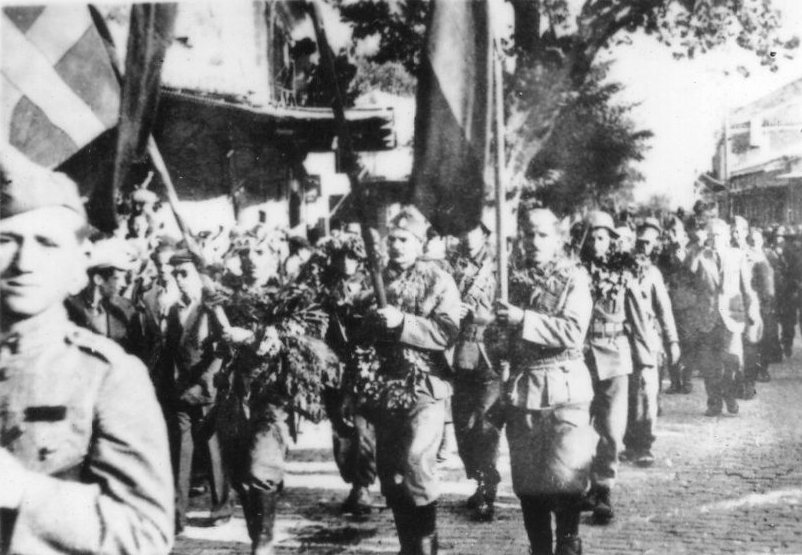|
Bergepolis
Bergepolis ( grc, Βεργέπολις) was a Greek town located in ancient Thrace, in the region between the river Nestos to the river Hebros. It was founded by colonists from Abdera. Bergepolis was an urban center dependent on Abdera. Bergepolis survived in the Roman times. Its site is located southeast of modern Xanthi Xanthi ( el, Ξάνθη, ''Xánthi'', ) is a city in the region of Western Thrace, northeastern Greece. It is the capital of the Xanthi (regional unit), Xanthi regional unit of the modern regions of Greece, region of East Macedonia and Thrace. A .... See also * Greek colonies in Thrace References Greek colonies in Thrace Populated places in ancient Thrace Former populated places in Greece History of Western Thrace {{ancientThrace-geo-stub ... [...More Info...] [...Related Items...] OR: [Wikipedia] [Google] [Baidu] |
List Of Ancient Cities In Thrace And Dacia
This is a list of ancient cities, towns, villages, and fortresses in and around Thrace and Dacia. A number of these settlements were Dacian and Thracian, but some were Celtic, Greek, Roman, Paeonian, or Persian. A number of cities in Dacia and Thrace were built on or close to the sites of preexisting Dacian or Thracian settlements. Some settlements in this list may have a double entry, such as the Paeonian ''Astibo'' and Latin ''Astibus''. It is believed that Thracians did not build true cities even if they were named as such; the largest Thracian settlements were large villages.The Cambridge Ancient History, Volume 3, Part 2: The Assyrian and Babylonian Empires and Other States of the Near East, from the Eighth to the Sixth Centuries BC by John Boardman, I. E. S. Edwards, E. Sollberger, and N. G. L. Hammond ,, 1992, page 612: "Thrace possessed only fortified areas and cities such as Cabassus would have been no more than large villages. In general the population lived in village ... [...More Info...] [...Related Items...] OR: [Wikipedia] [Google] [Baidu] |
Ancient Greek
Ancient Greek includes the forms of the Greek language used in ancient Greece and the ancient world from around 1500 BC to 300 BC. It is often roughly divided into the following periods: Mycenaean Greek (), Dark Ages (), the Archaic period (), and the Classical period (). Ancient Greek was the language of Homer and of fifth-century Athenian historians, playwrights, and philosophers. It has contributed many words to English vocabulary and has been a standard subject of study in educational institutions of the Western world since the Renaissance. This article primarily contains information about the Epic and Classical periods of the language. From the Hellenistic period (), Ancient Greek was followed by Koine Greek, which is regarded as a separate historical stage, although its earliest form closely resembles Attic Greek and its latest form approaches Medieval Greek. There were several regional dialects of Ancient Greek, of which Attic Greek developed into Koine. Dia ... [...More Info...] [...Related Items...] OR: [Wikipedia] [Google] [Baidu] |
Ancient Thrace
The Thracians (; grc, Θρᾷκες ''Thrāikes''; la, Thraci) were an Indo-European languages, Indo-European speaking people who inhabited large parts of Eastern Europe, Eastern and Southeast Europe, Southeastern Europe in ancient history.. "The Thracians were an Indo-European people who occupied the area between northern Greece, southern Russia, and north-western Turkey. They shared the same language and culture... There may have been as many as a million Thracians, diveded among up to 40 tribes." Thracians resided mainly in the Balkans (mostly Present (time), modern day Bulgaria, Turkey and Greece) but were also located in Anatolia, Anatolia (Asia Minor) and other locations in Eastern Europe. The exact origin of Thracians is unknown, but it is believed that proto-Thracians descended from a purported mixture of Proto-Indo-Europeans and Early European Farmers, arriving from the rest of Asia and Africa through the Asia Minor (Anatolia). The proto-Thracian culture developed int ... [...More Info...] [...Related Items...] OR: [Wikipedia] [Google] [Baidu] |
Abdera, Thrace
Abdera () is a municipality in the Xanthi regional unit of Thrace, Greece. In classical antiquity, it was a major Greek ''polis'' on the Thracian coast. The ancient polis is to be distinguished from the municipality, which was named in its honor. The polis lay 17 km east-northeast of the mouth of the Nestos River, almost directly opposite the island of Thasos. It was a colony placed in previously unsettled Thracian territory, not then a part of Hellas, during the age of Greek colonization. The city that developed from it became of major importance in ancient Greece. After the 4th centuryAD it declined, contracted to its acropolis, and was abandoned, never to be reoccupied except by archaeologists. Meanwhile, life went on as the changing population settled in other communities in the region. One named Polystylus changed its name to Abdera. In 2011 the municipality of Abdera was synoecized from three previous municipalities comprising a number of modern settlements. The ancie ... [...More Info...] [...Related Items...] OR: [Wikipedia] [Google] [Baidu] |
Oxford University Press
Oxford University Press (OUP) is the university press of the University of Oxford. It is the largest university press in the world, and its printing history dates back to the 1480s. Having been officially granted the legal right to print books by decree in 1586, it is the second oldest university press after Cambridge University Press. It is a department of the University of Oxford and is governed by a group of 15 academics known as the Delegates of the Press, who are appointed by the vice-chancellor of the University of Oxford. The Delegates of the Press are led by the Secretary to the Delegates, who serves as OUP's chief executive and as its major representative on other university bodies. Oxford University Press has had a similar governance structure since the 17th century. The press is located on Walton Street, Oxford, opposite Somerville College, in the inner suburb of Jericho. For the last 500 years, OUP has primarily focused on the publication of pedagogical texts and ... [...More Info...] [...Related Items...] OR: [Wikipedia] [Google] [Baidu] |
Xanthi
Xanthi ( el, Ξάνθη, ''Xánthi'', ) is a city in the region of Western Thrace, northeastern Greece. It is the capital of the Xanthi (regional unit), Xanthi regional unit of the modern regions of Greece, region of East Macedonia and Thrace. Amphitheatrically built on the foot of Rhodope mountains, Rhodope mountain chain, the city is divided by the Kosynthos River, into the west part, where the old and the modern town are located, and the east part that boasts a rich natural environment. The "Old Town of Xanthi" is known throughout Greece for its distinctive architecture, combining many Byzantine Greeks, Byzantine Greek churches with neoclassicism, neoclassical mansions of Greek merchants from the 18th and 19th centuries and Ottoman-Era mosques. Other landmarks in Xanthi include the Archaeological Museum of Abdera, Thrace, Abdera and the Greek Folk Art Museum. Xanthi is famous throughout Greece (especially Macedonia (Greece), Macedonia and Western Thrace, Thrace) for its annual ... [...More Info...] [...Related Items...] OR: [Wikipedia] [Google] [Baidu] |
Greek Colonies In Thrace
Greek may refer to: Greece Anything of, from, or related to Greece, a country in Southern Europe: *Greeks, an ethnic group. *Greek language, a branch of the Indo-European language family. **Proto-Greek language, the assumed last common ancestor of all known varieties of Greek. **Mycenaean Greek, most ancient attested form of the language (16th to 11th centuries BC). **Ancient Greek, forms of the language used c. 1000–330 BC. **Koine Greek, common form of Greek spoken and written during Classical antiquity. **Medieval Greek or Byzantine Language, language used between the Middle Ages and the Ottoman conquest of Constantinople. **Modern Greek, varieties spoken in the modern era (from 1453 AD). *Greek alphabet, script used to write the Greek language. *Greek Orthodox Church, several Churches of the Eastern Orthodox Church. *Ancient Greece, the ancient civilization before the end of Antiquity. *Old Greek, the language as spoken from Late Antiquity to around 1500 AD. Other uses * '' ... [...More Info...] [...Related Items...] OR: [Wikipedia] [Google] [Baidu] |
Populated Places In Ancient Thrace
Population typically refers to the number of people in a single area, whether it be a city or town, region, country, continent, or the world. Governments typically quantify the size of the resident population within their jurisdiction using a census, a process of collecting, analysing, compiling, and publishing data regarding a population. Perspectives of various disciplines Social sciences In sociology and population geography, population refers to a group of human beings with some predefined criterion in common, such as location, race, ethnicity, nationality, or religion. Demography is a social science which entails the statistical study of populations. Ecology In ecology, a population is a group of organisms of the same species who inhabit the same particular geographical area and are capable of interbreeding. The area of a sexual population is the area where inter-breeding is possible between any pair within the area and more probable than cross-breeding with ind ... [...More Info...] [...Related Items...] OR: [Wikipedia] [Google] [Baidu] |
Former Populated Places In Greece
A former is an object, such as a template, gauge or cutting die, which is used to form something such as a boat's hull. Typically, a former gives shape to a structure that may have complex curvature. A former may become an integral part of the finished structure, as in an aircraft fuselage, or it may be removable, being using in the construction process and then discarded or re-used. Aircraft formers Formers are used in the construction of aircraft fuselage, of which a typical fuselage has a series from the nose to the empennage, typically perpendicular to the longitudinal axis of the aircraft. The primary purpose of formers is to establish the shape of the fuselage and reduce the column length of stringers to prevent instability. Formers are typically attached to longerons, which support the skin of the aircraft. The "former-and-longeron" technique (also called stations and stringers) was adopted from boat construction, and was typical of light aircraft built until the ... [...More Info...] [...Related Items...] OR: [Wikipedia] [Google] [Baidu] |



.jpg)


